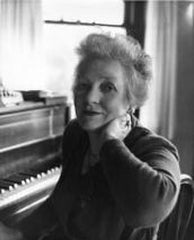Composers
Margaret Sutherland - Australian Heritage Series
 {1897-1984)
{1897-1984)
The Australian composer and pianist, Margaret Sutherland exerted an inestimable influence and contribution on Australian music. She considered it her mission to promote new music, especially that of Australian composers ‘who’, she said, ‘experienced public indifference and a profound sense of isolation.’ Sutherland’s teaching was legendary; she personally inspired young poets, composers and artists. Born in Adelaide, Sutherland’s early tuition included piano studies with Edward Goll and composition with Fritz Hart at the Marshall Hall Conservatorium (now the Melba Conservatorium); she later attended the Melbourne University Conservatorium. In 1916 Verbrugghen, the director of the N.S.W. Conservatorium of Music, invited her to become a soloist with the N.S.W. State Orchestra.
After teaching and giving recitals for several years in Australia, she commenced studying orchestration and conducting in London and Vienna. Under the tutelage of Sir Arnold Bax in London, Sutherland composed one of her first published works, her Violin Sonata. She went on to publish more than 90 compositions, covering stage, instrumental, vocal, chamber and orchestral (including a Concerto Grosso). In 1965 her only opera, The Young Kabbarli, was premiered at the Festival of Contemporary Opera and Music in Hobart. Kabbarli was based on an incident in the life of Daisy Bates and incorporated the poetry of Judith Wright and John Shaw Neilson. In 1976 Grahme Murphy choreographed her orchestral work Haunted Hills in the award winning "Glimpses" which was a great success for the Australian Ballet and the Sydney Dance Company.
While never compromising her family life, Sutherland remained a tireless ambassador for the promotion of music. During the Second World War, she arranged war-time midday chamber music concerts for the Red Cross; she became a member of the Council for Education and the Arts, an adviser to UNESCO and to the National Gallery. The Victorian Arts Centre was developed largely because of her strenuous lobbying of the Victorian government for land dedicated to that purpose. It was, however, many years before Sutherland’s full contribution to the arts was recognised; it was equally long before her own compositions received the recognition they deserved. Sutherland was awarded a DMus. from the University of Melbourne in 1969, an OBE in 1970, the Queen’s Jubilee medal in 1977 and in 1981 she received the Order of Australia. The last fifteen years of her life were difficult after a stroke left her with failing eyesight and physical difficulties.
See all works by Margaret in our shop
